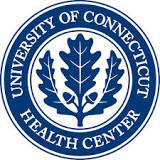Genetic and Functional Analysis of Cherubism
| Status: | Recruiting |
|---|---|
| Healthy: | No |
| Age Range: | Any |
| Updated: | 11/9/2018 |
| Start Date: | April 2009 |
| End Date: | December 2025 |
| Contact: | Ernst J Reichenberger, PhD |
| Email: | reichenberger@uchc.edu |
| Phone: | 860-679-2062 |
Identification of Mutations That Lead to Cherubism in Families and Isolated Cases and Studies of Cellular and Molecular Mechanisms
The goal of this research study is to identify genes and regulatory elements on chromosomes
that cause cherubism. Together with the investigators collaborators the investigators also
study blood samples and tissue samples from patients to learn about the processes that lead
to this disorder. The long-term goal of researchers involved in this study is to find
mechanisms to slow down bone resorption in cherubism patients.
that cause cherubism. Together with the investigators collaborators the investigators also
study blood samples and tissue samples from patients to learn about the processes that lead
to this disorder. The long-term goal of researchers involved in this study is to find
mechanisms to slow down bone resorption in cherubism patients.
Cherubism is a very rare bone disorder where bone gets excessively resorbed only in the jaw
bones (mandible and maxilla). The resulting cavities in bone fill up with soft fibrous
(fibro-osseous) tissues that can expand and push the bony shells apart. Thus the
characteristic facial appearance in patients with progressed cherubism. Bone resorption
(cherubism lesions) in this disorder occurs always symmetrically in the mandible, the maxilla
or in both. This distinguishes cherubism from similar disorders. As cherubism progresses, the
lesions can invade the eye sockets (inferior and/or lateral orbital walls) and displace the
eye balls and push down the eyelids. As a result the sclera (white of the eye) below the iris
becomes visible and patients have an upward gazing appearance (cherubic look) which gave the
name to this fibro-proliferative bone disorder.
Cherubism typically appears between ages of 2-7 years. It is often diagnosed during dental
evaluations. At early stages cherubism is accompanied by lymph node swelling. Proliferation
of the fibro-osseous tissue typically stops after puberty and in many the soft tissue in the
cherubic bone cavities are replaced by new bone.
For this study we will:
- Send out study participation kits and consent by phone
- Collect a saliva sample from eligible individuals
- Obtain information regarding cherubism
- Document disorder with photos and doctor's letters
- If patients undergo surgery for cherubism we ask to obtain some bone tissue that would
otherwise be discarded
- Isolate DNA from the saliva sample
- Perform genetic analyses of the DNA with the most up-to-date methods available to
identify genetic variations
- Study in the laboratory why the genetic variations cause the disorder
bones (mandible and maxilla). The resulting cavities in bone fill up with soft fibrous
(fibro-osseous) tissues that can expand and push the bony shells apart. Thus the
characteristic facial appearance in patients with progressed cherubism. Bone resorption
(cherubism lesions) in this disorder occurs always symmetrically in the mandible, the maxilla
or in both. This distinguishes cherubism from similar disorders. As cherubism progresses, the
lesions can invade the eye sockets (inferior and/or lateral orbital walls) and displace the
eye balls and push down the eyelids. As a result the sclera (white of the eye) below the iris
becomes visible and patients have an upward gazing appearance (cherubic look) which gave the
name to this fibro-proliferative bone disorder.
Cherubism typically appears between ages of 2-7 years. It is often diagnosed during dental
evaluations. At early stages cherubism is accompanied by lymph node swelling. Proliferation
of the fibro-osseous tissue typically stops after puberty and in many the soft tissue in the
cherubic bone cavities are replaced by new bone.
For this study we will:
- Send out study participation kits and consent by phone
- Collect a saliva sample from eligible individuals
- Obtain information regarding cherubism
- Document disorder with photos and doctor's letters
- If patients undergo surgery for cherubism we ask to obtain some bone tissue that would
otherwise be discarded
- Isolate DNA from the saliva sample
- Perform genetic analyses of the DNA with the most up-to-date methods available to
identify genetic variations
- Study in the laboratory why the genetic variations cause the disorder
Inclusion Criteria:
- cherubism; unaffected individuals only if part of a participating cherubism family
Exclusion Criteria:
- no cherubism unaffected individuals only as part of a participating cherubism family
We found this trial at
1
site
263 Farmington Ave
Farmington, Connecticut 06030
Farmington, Connecticut 06030
(860) 679-2000

Phone: 860-679-2062
University of Connecticut Health Center UConn Health is a vibrant, integrated academic medical center that...
Click here to add this to my saved trials